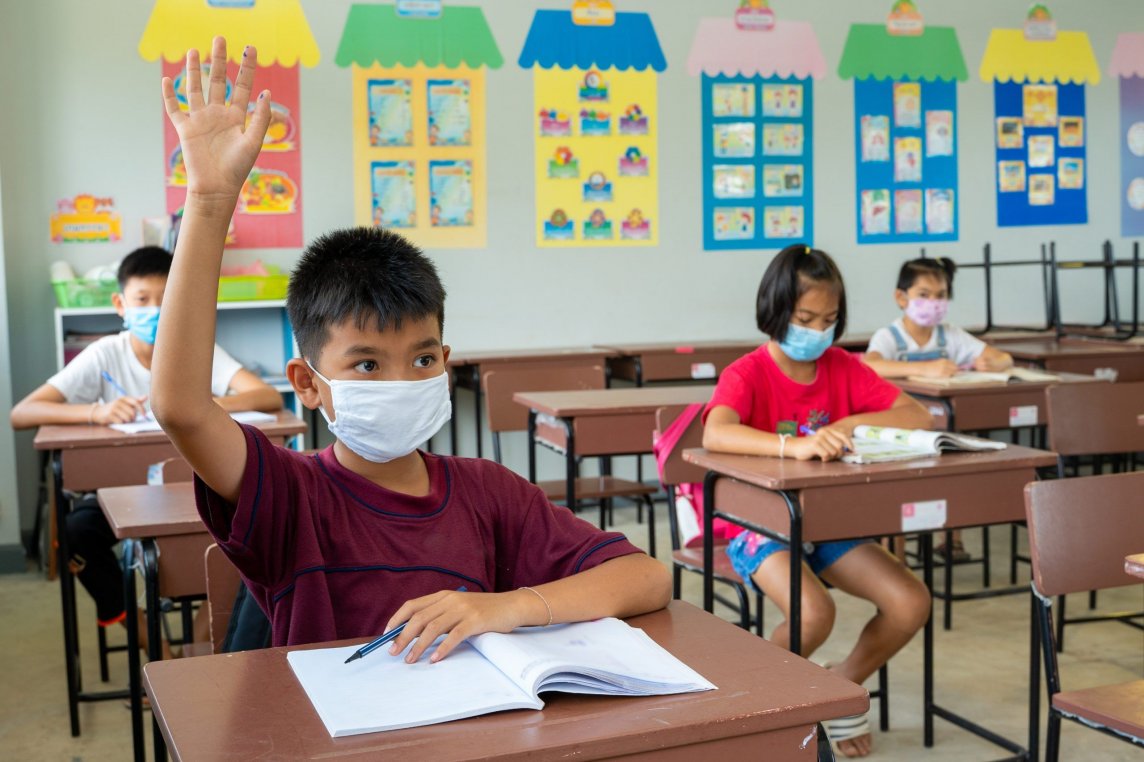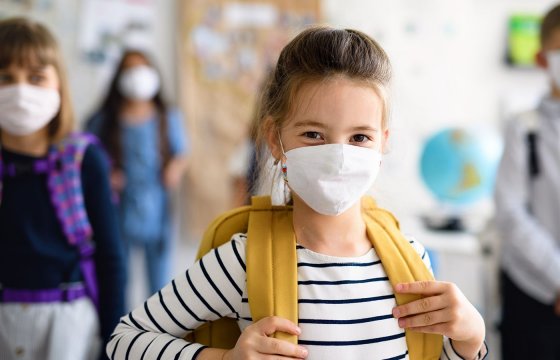Back to School with Covid-19

Back to School! We don't know exactly how it will go during a pandemic, but parents will have some extra preparation this year. Before school starts, children need to know about social distancing, frequent hand washing and cleaning surfaces frequently. Masks are a little more complicated but essential for everyone to wear.
Back to School! We don't know exactly how it will go during a pandemic, but parents will have some extra preparation this year. Before school starts, children need to know about social distancing, frequent hand washing and cleaning surfaces frequently. Masks are a little more complicated but essential for everyone to wear.
Cloth masks trap moist germ-filled air coming out of the mouth and nose with every breath, sneeze or cough. Children don't cover their coughs well, but they do touch their faces a lot so masks are extra important for them. Masks help the wearer a little by keeping hands from touching faces, but mostly helps others around us. As you may have heard, “My mask protects you, your mask protects me.” At the Center for Pediatric Medicine, we have been pleased to see how well even young children do wearing masks.
Kids are more likely to wear a mask if they like it so let them help choose or help make their own. Simple patterns and instructions can be found online, even if you don't sew, and this can be a great learning opportunity. Masks should be made from at least 2 layers of cloth, ideally tightly woven (“high thread count”) and water repellent (wet masks don't work), but even old t-shirts or colorful bandanas work. Front and back should look different and masks should have the child's name. Masks need to fit closely around nose, cheeks, and chin – no gaps for air to leak in and out. Ties or elastic ear loops both work. If masks have a flexible metal edge, it goes at the top so it can be adjusted to fit close against the nose.
The first step in wearing masks is to wash hands thoroughly with soap and hot water (or hand sanitizer if needed). Using the loops or ties, cover the nose first, adjust, and then cover the mouth. When touching the mask, use only the inside or the side edge. If the mask needs to be taken off, fold it with the outer “dirty” sides facing each other so they don't touch anything “clean” and put in a plastic bag. Remember - Any time anyone touches any mask, they must wash hands – before, during, and after every touch! Wash masks daily using regular detergent in hot water and machine dry. Hanging them in a sunny spot, ironing, and bleach may help too. Children need enough masks to have a fresh one daily, and one for emergency back-up.
Get children used to wearing masks now, so they can help protect everyone when school starts. Children imitate what they see so make sure they see parents, older kids and other role models in masks. Pretend play with dolls or stuffed animals can help children learn that children usually don't get very sick from Covid-19, but wearing masks keeps us from accidentally spreading germs. They help us to show courtesy and respect for others who might get much sicker. Make up a Simon Says type game to help practice mask wearing rules. Anyone who makes a mistake touching their face or mask, must go and wash their dirty hands!
For more information about masks and other ways to stay safe during the Covid-19 pandemic, search for your topic at cdc.gov/coronavirus.
Claire Bailey, MD, is a doctor at the Center for Pediatric Medicine, where she has cared for Danbury area children for over 20 years. CPM is located at 107 Newtown Rd #1D, Danbury, CT 06810. For more information, please call (203) 790-0822 or visit https://centerforpediatricmedct.com.








